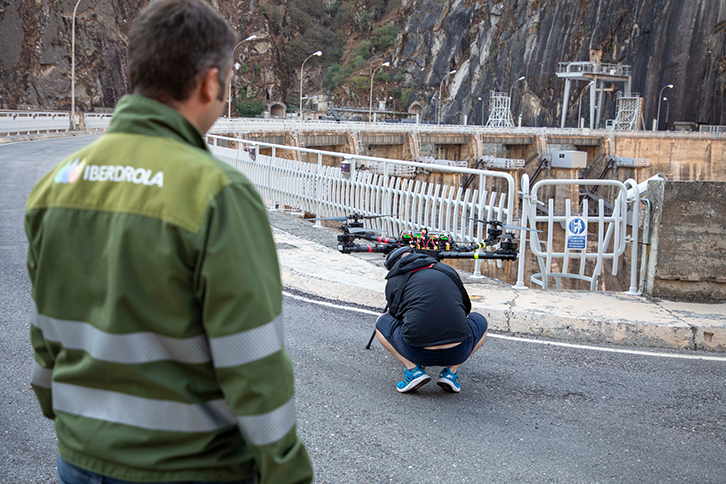News
2023-05-23 11:39:00.0The Aldeadávila dam, the setting for the tenth Fast & Furious movie
- This hydroelectric infrastructure, owned by Iberdrola, has also been the setting for other important film productions such as 'Doctor Zhivago', 'Terminator' and ‘La Cabina’ [The Telephone Box].
- Aldeadávila continues to amaze with its grandeur and the place where it was built, in a rugged area of granite rocks whose beauty attracts hundreds of visitors every year.
The Aldeadávila dam, owned by Iberdrola, has become one of the most coveted film locations in our country, this time being chosen by Universal Pictures for the tenth installment of Fast & Furious, which was released this weekend and, as expected, is a box office hit worldwide.
This hydroelectric installation, which continues to amaze by its grandeur and the place where it was built, in a rugged area of granite rocks whose beauty attracts hundreds of visitors every year, has been seen in all its splendour on the big screen after last Friday's premiere of one of Hollywood's most iconic sagas.
On its way through the province of Salamanca, with more than half a century behind it, Aldeadávila is 140 metres high by 250 metres wide and is capable of reserving 115 cubic hectometres in an area of 368 hectares, equivalent to almost 97 stadiums such as the Bernabéu. Nestled in the impressive canyon of the lower section of the Duero River in the Arribes del Duero Natural Park, it has also been the setting for other major film productions such as the latest Terminator saga, Doctor Zhivago, winner of five Oscars and as many Golden Globes, and the Spanish film La Cabina [The Telephone Box], by Antonio Mercero.
The sequences filmed in this place have had a significant deployment of state-of-the-art technological resources, including drones, helicopters and high-speed cameras for the recording of the most action-packed scenes.
In 2016, it also became the protagonist of the campaign that the Japanese company Fujitsu launched under the slogan The world is your workplace /El mundo es tu oficina. It focused its minute-long campaign on highlighting the freedom of working with its new laptop model, showing how four employees jumped from their office to the most striking natural landscapes in Spain, which they were able to access through the machine.
From the Douro Waterfalls to global energy leadership
Iberdrola's commitment to Castile and León is part of the company's deep ties with this region, where it was founded more than 120 years ago and from where it has been promoting the energy transition towards renewable, clean and competitive energies that promote the development of a sustainable and environmentally and socio-economically responsible society.
Iberdrola's commitment to clean energies began precisely with the promotion of the Douro Waterfalls and this commitment, more than a century later, has materialised by becoming a global energy leader, the leading wind power producer and one of the largest electricity companies in the world in terms of stock market capitalisation.
In Castile and León, Iberdrola is a leader in the development of these energies, with the management of more than 5,200 MW of renewable energy - 3,500 MW of hydroelectric energy- which consolidates the region as the autonomous community with the most "green" megawatts installed by the company in Spain.
One of the most important milestones in Iberdrola's history
The mighty Douro River, despite being a means of transport for long periods of time, concealed an unimaginable treasure in the form of energy in its lower section. It was the engineer José Orbegozo who, after studying the river and viewing the entire canyon, realised the enormous possibilities of the international section and the magnitude of the project.
This consisted of building powerful waterfalls to take advantage of the fantastic cascade and creating large reservoirs on the rivers Esla and Tormes. These reservoirs would regulate the flow and guarantee the production of the powerful power stations that would be installed downstream, either on the national or international section of the Douro, which, on the border between Spain and Portugal, and along its 160-kilometre course, had a gradient of 400 metres.
The creation of the Aldeadávila dam represents one of the most important milestones in Iberdrola's more than century-long history in Spain, a history that is the sum of the efforts of several generations who have known how to take advantage, at all times, of the opportunities of the electricity market, with the ultimate goal of responding to the demands of industrial development and the well-being of society.







